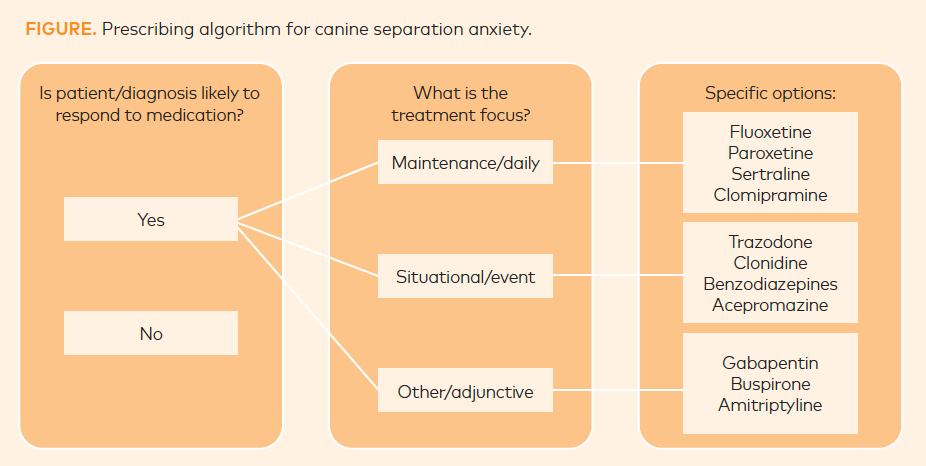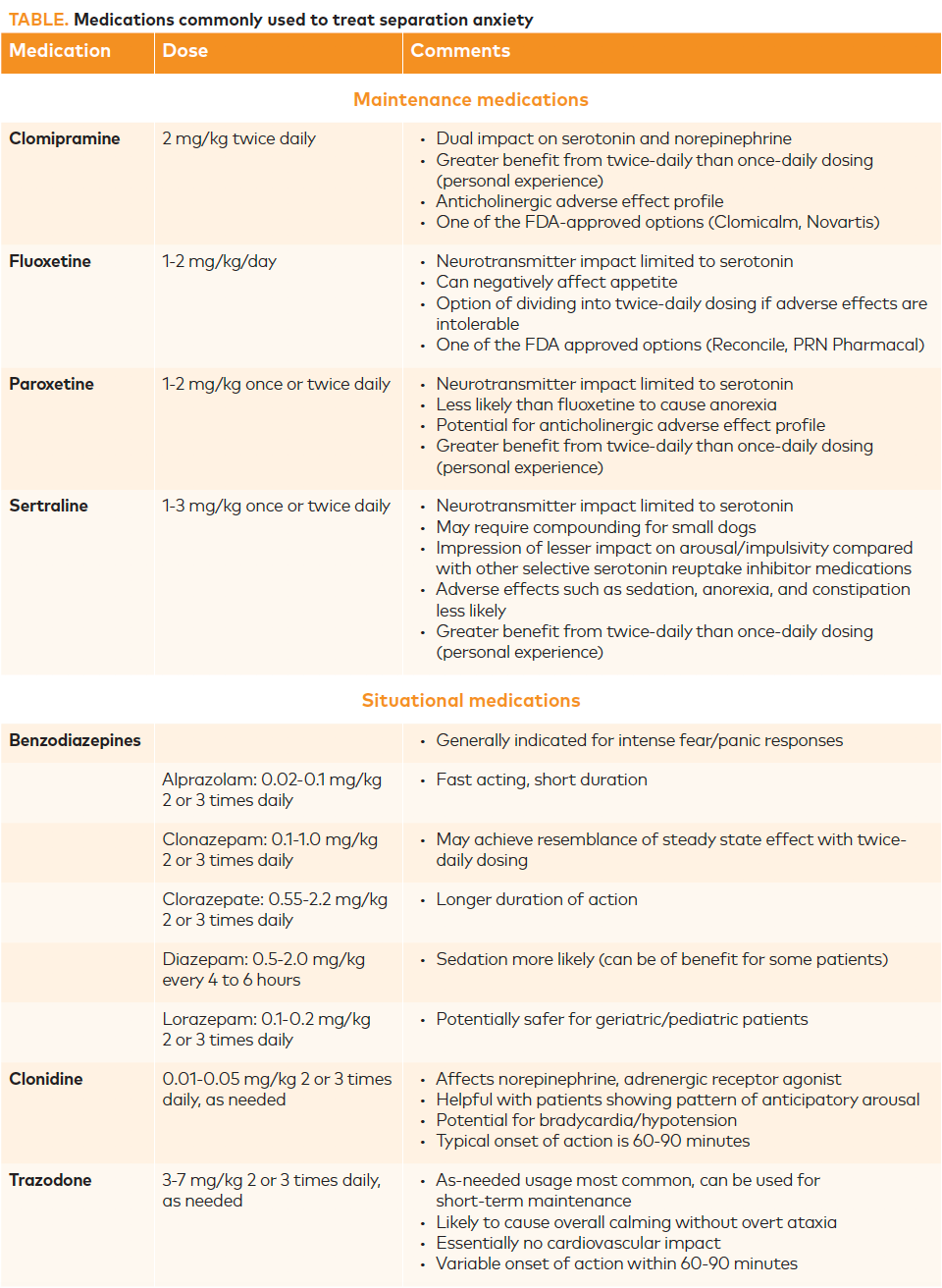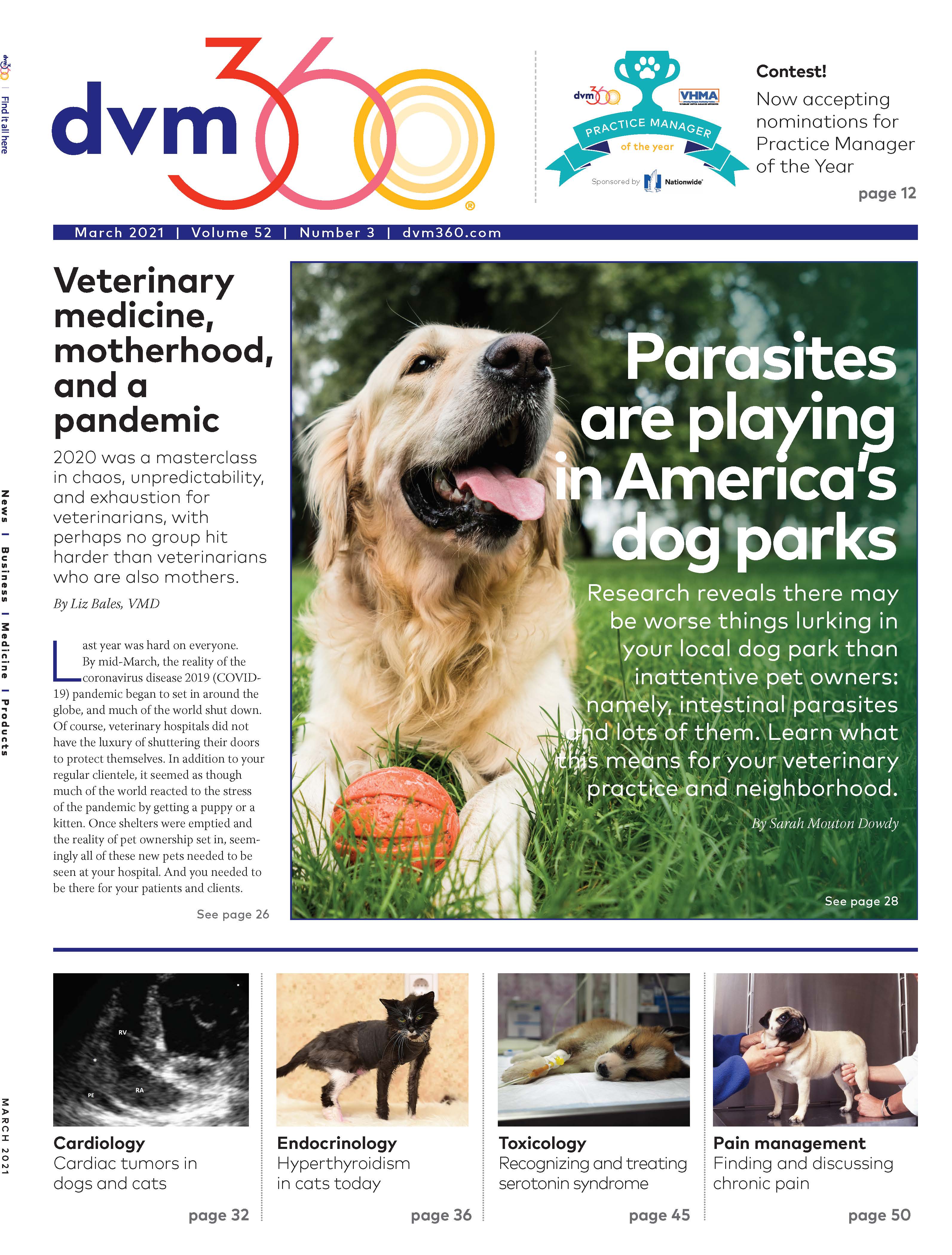When and how to prescribe for separation anxiety in dogs
Could your canine patients benefit from daily medication for this behavior problem, or is there another solution?
As the owner of Animal Behavior Clinic in Portland, Oregon, Christopher Pachel, DVM, DACVB, CABC, is no stranger to separation anxiety. At a recent Fetch dvm360® virtual conference, Pachel shared his strategies for developing a multipronged treatment approach for these cases, including determining whether medications might be beneficial as part of daily maintenance.
Back to basics
Before delving into specific treatment strategies, Pachel provided a concise overview of separation anxiety. “By definition, we are talking about a collection of problematic behaviors that happen exclusively during separation from the owner or a group member,” he said. The primary signs of canine separation anxiety include destruction, often focused on entry and exit points, persistent vocalizations, hyperattachment behaviors during interactions with the owner, and housesoiling.
Even when a client is adamant that their pet is displaying signs of separation anxiety, Pachel stressed the importance of confirming the diagnosis. This may include a documented history of the problem or video evidence of what happens after the owner departs and during their absence.
Pachel stressed the importance of ruling out diagnostic differentials and determining comorbid diagnoses, including noise phobia, confinement intolerance, territorial behavior, and situational anxiety. He also discussed the need to evaluate for inappropriate elimination that may be unrelated to separation anxiety, including incomplete housetraining, urinary tract conditions, marking behavior, or insufficient outdoor access.
“I always want to be super careful that we are not jumping the gun and simply medicating the diagnosis or medicating the wrong problem,” he said.
Pinpointing a treatment plan
There are many options for treating canine separation anxiety, Pachel said. “We could focus on management by not leaving the animal alone for longer than they can comfortably handle,” he suggested. “We may also try to pinpoint exercise needs to make sure the animal is being set up to succeed by getting enough activity before we expect it to hang out on the couch for a while.”
Skill-building tools can also be used to bolster confidence and teach dogs to be less dependent on their owners and less concerned about departure cues and being alone. Even with a plan based on management strategies and training, Pachel encouraged attendees to consider supplementing with situational or maintenance medications (or both) to round out the treatment protocol if the animal is likely to experience any level of stress during the treatment process.
Prescribing algorithm
Figure 1.

Pachel shared his 3-step algorithm for determining whether and when a patient might benefit from medication (Figure) based on the answers to these 3 questions:
- Is the patient likely to benefit from the inclusion of medication in a behavioral treatment plan? For example, if the diagnosis involves fear, anxiety, stress, emotional arousal, or a compulsive disorder, there is well-documented efficacy for medication interventions. However, if the issue is related to insufficient training, a medication-based treatment plan would not be applicable.
- Which approach to medication use (maintenance or situational) is indicated by the clinical history and patient need?
- Which specific neurotransmitter or treatment effect is desired?
“I cannot tell you the number of times I’ve had someone ask me what my go-to medication is for separation anxiety,” Pachel said. “I don’t have one, but if you tell me that the dog suffers from emotional arousal, does not have a lot of generalized anxiety concerns, hypersalivates, and needs to be left home alone for 8 hours a day/5 days a week, then I have a favorite medication. But I need that additional information.”
Maintenance medications
Maintenance medications are administered daily regardless of whether the dog will be left alone that day. These medications—typically an antidepressant or selective serotonin reuptake inhibitor—are generally used if the departures are frequent, of long duration, unpredictable, or unavoidable. Pachel most commonly prescribes clomipramine, fluoxetine, paroxetine, or sertraline (Table).
Table 1.

Starting a patient on a maintenance medication is not going to fix the problem immediately, but it will help facilitate a better response to overall interventions, such as behavior modification protocols. Of the medications used to treat canine separation anxiety, only 2 are FDA approved: fluoxetine (Reconcile, PRN Pharmacal) and clomipramine (Clomicalm, Novartis). Both are labeled for use in combination with a behavior modification plan.
“Just know that if you are prescribing those without behavior modification, it puts them into an off-label category,” Pachel clarified. “It doesn’t mean we can’t do it, but just be aware.”
Situational medications
Situational, or event-based, medications work best when needed infrequently and when the owner has advance notice of departure. The latter is key to the medication’s success because the medication needs adequate time—typically at least 15 minutes and often closer to 1 hour or more—to take effect.
If, for example, someone needs to leave their dog home alone twice a day, 6 days a week, it is hard to manage the separation anxiety with situational medication, Pachel said. Those cases tend to do better with a maintenance medication.
Situational medications (benzodiazepines, clonidine, and trazodone) can also be used in combination with daily maintenance-focused medication (Table). For instance, trazodone might be used while the preferred daily medication is being onboarded. Or it could be saved for when the pet will be left alone for abnormally long periods or during particularly chaotic departures, he added.
Alternative medications and support
Pachel recognized that there are other medications that can also help manage signs of separation anxiety. “In my personal prescribing bias, I don’t tend to reach for gabapentin, buspirone, or amitriptyline as first-line medications. But it’s not that you can’t or won’t get clinical responses [from those drugs],” he said.
Case in point: Pachel has started to use gabapentin as an as-needed situational medication before a veterinary appointment or an owner departure. “There are variable effects from one animal to the next, but for some patients, its anxiolytic effect, with or without mild sedation, could be helpful.”
Pachel concluded with a reminder that veterinarians also have access to a plethora of nutraceuticals, supplements, and pheromone-based options for managing these patients. “Know that these are choices, too,” he said, “either as adjuncts or if you have a client who is resistant to pharmaceutical intervention or a patient you are concerned about from a safety standpoint.”
He encouraged attendees to reach out to company representatives for questions about how their products might benefit your patients that suffer from separation anxiety.
Amanda Carrozza is a freelance writer and editor in New Jersey.

